Key in a search term below to search our website.
Key in a search term below to search our website.
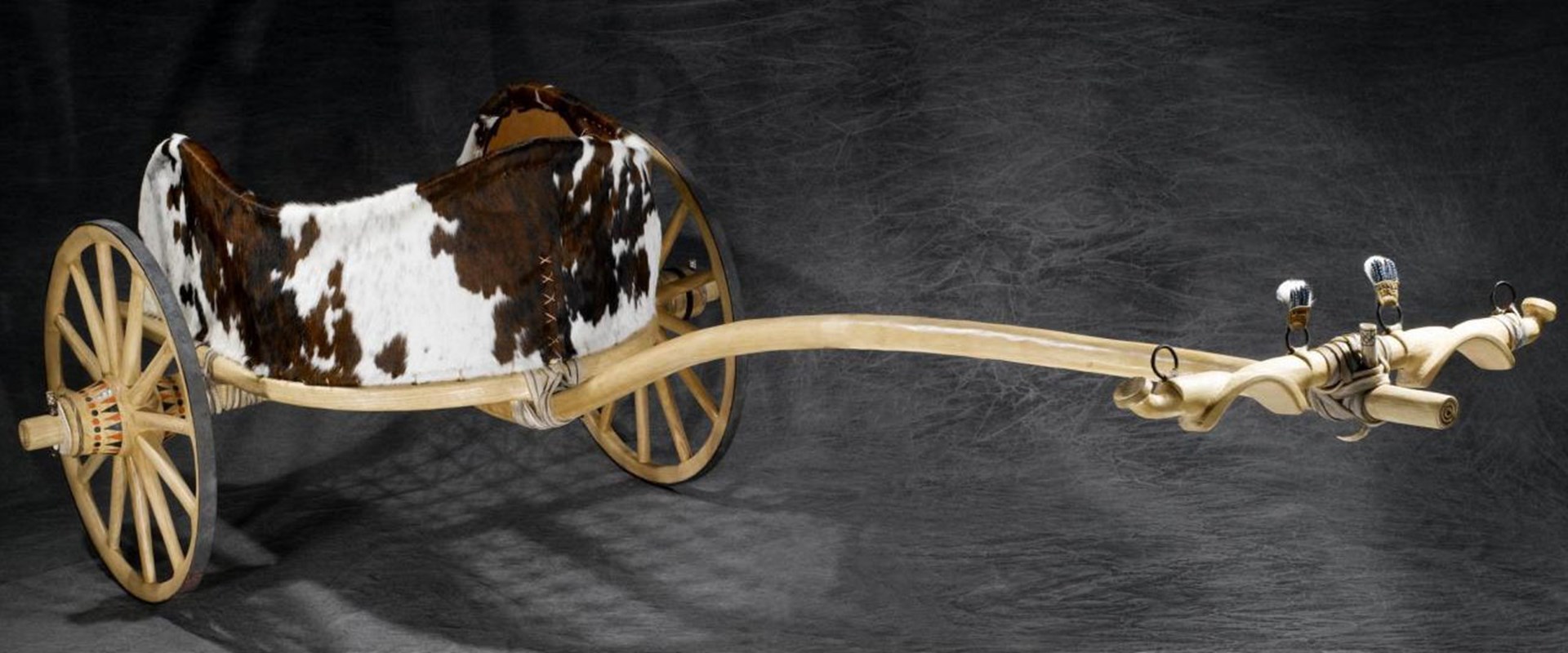
This splendid reconstruction brings to life an Iron Age chariot discovered at Newbridge, near Edinburgh Airport. Chariot burials were very exclusive, and this is the oldest in Britain.
Date
2007
Made by
Robert Hurford, with ironwork by Pete Hill at Ratho Byres Forge
Made from
Wood (mostly ash), rawhide, iron, feathers
Museum reference
Did you know?
The Romans were influenced by Celtic chariot forms and technologies when constructing their own chariots.
In 2001, archaeological excavations by Headland Archaeology prior to new developments at Newbridge, near Edinburgh Airport, uncovered a surprising find – an Iron Age chariot burial, the first one known from Scotland.
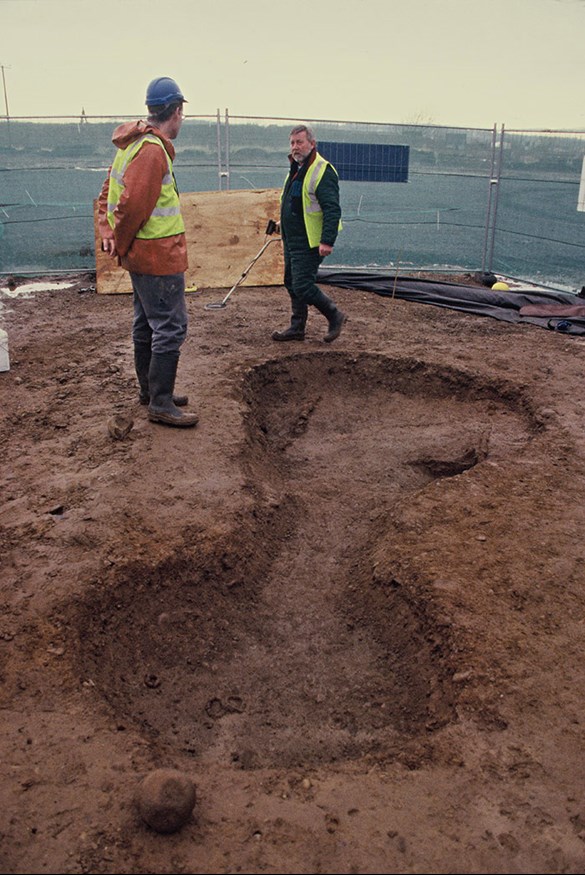
Above: A strange pit with ironwork emerges from the soil – the first glimpse of the chariot burial.
A team of specialists from Headland Archaeology and National Museums Scotland excavated this nationally-significant discovery. Every surviving element was carefully exposed and recorded.
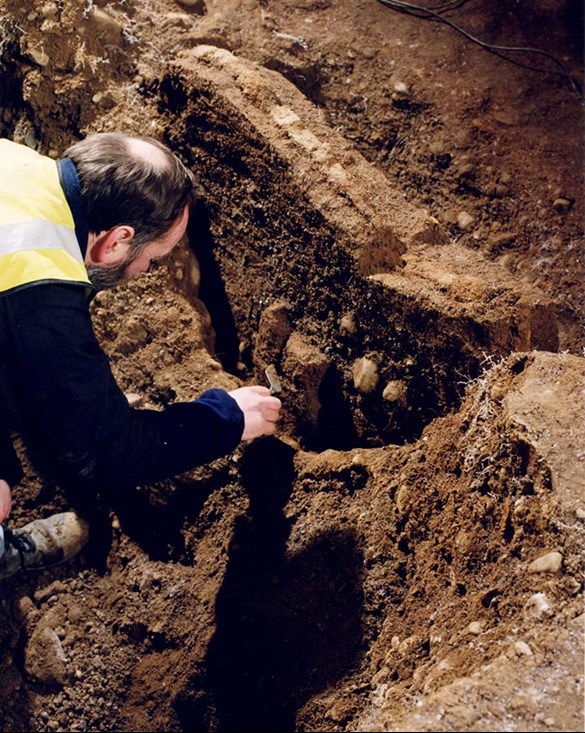
Above: Careful excavation of the wheel remains
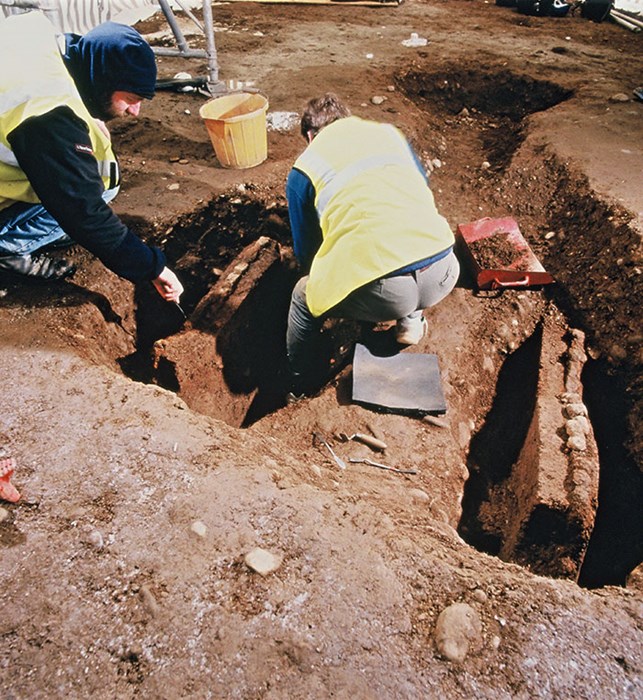
Above: Slots had been dug into the base of the grave to take the chariot wheels. The strips of iron are the tyres.
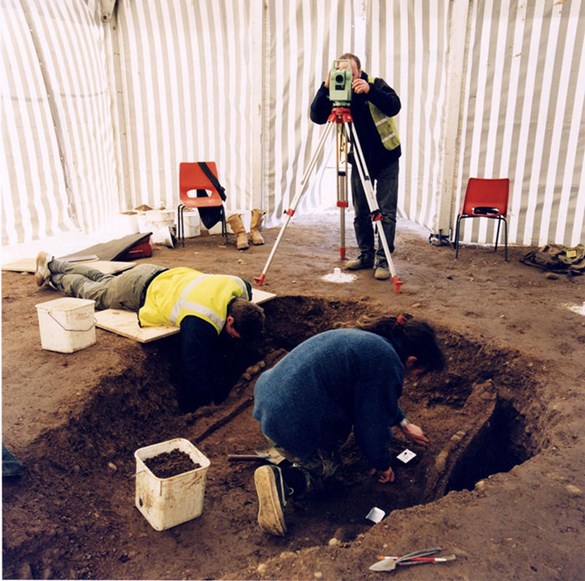
Above: Sampling soil and recording the remains. Careful recording is vital to understand what survives.
The shape of the chariot is outlined in the pit dug into the gravel. The two wheels sit in slots dug to accommodate them, and the iron fittings from the yoke and bridle bits are at the top, where the pit widens again.
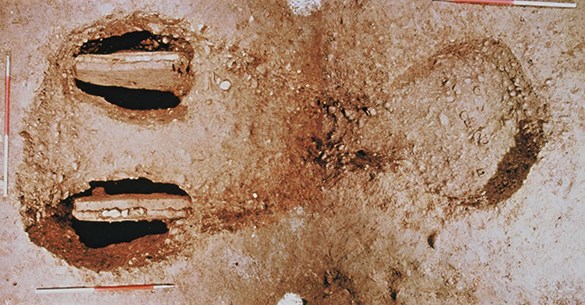
Above: The remains of the chariot as excavated.
The remains of the wheels were taken back to National Museums Scotland’s conservation lab for careful excavation. They were lifted in soil blocks weighing almost half a tonne.
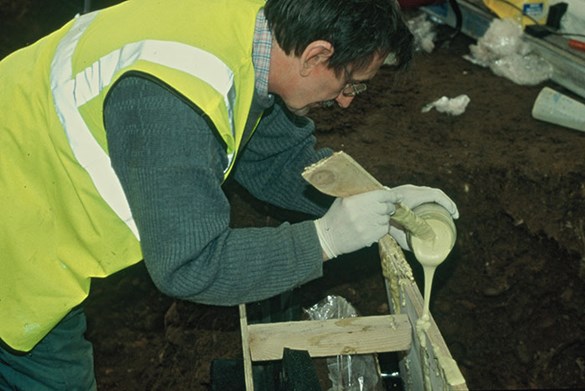
Above: The soil blocks were clad in timber and packed out with foam.
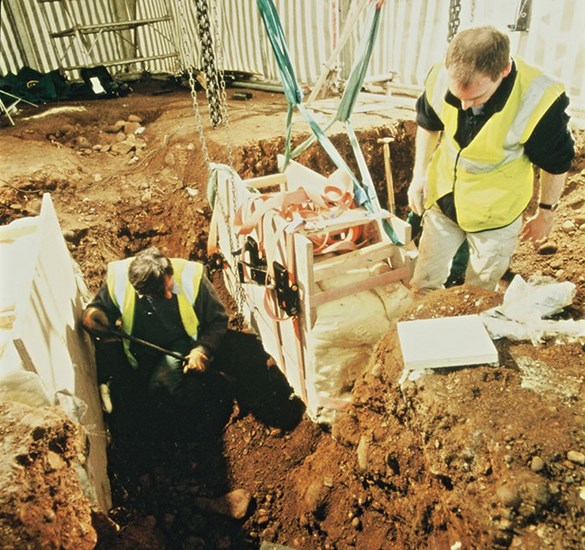
Above: The two wheel blocks ready to lift.
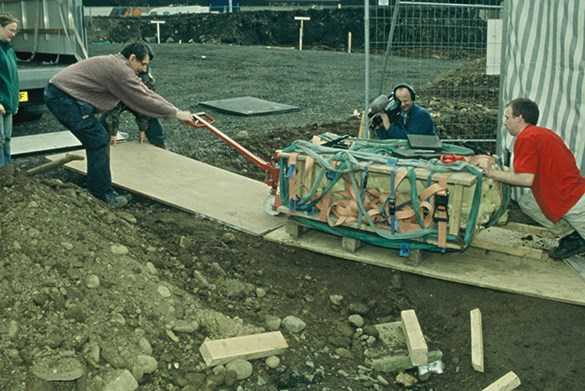
Above: The wheels leave the ground for the first time in 2,400 years.
The wheels were excavated in the museum’s conservation laboratory. Corrosion of the iron had preserved some of the wood. This allowed the wheel to be reconstructed very accurately.
The preserved wood also provided a radiocarbon date. The chariot was built between 475-380 BC, making it the oldest chariot burial in Britain.

Above: The chariot wheel is revealed.
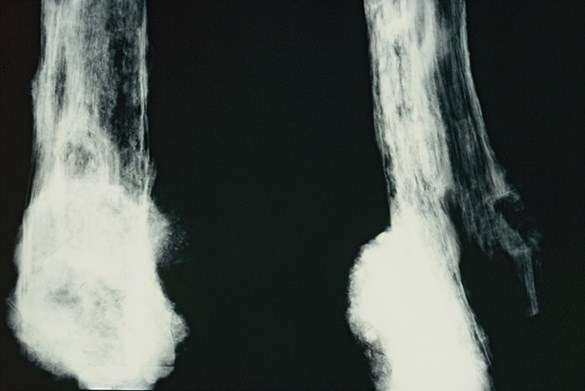
Above: X-rays revealed details of the spoke fittings. The white area is the corroded iron tyre.
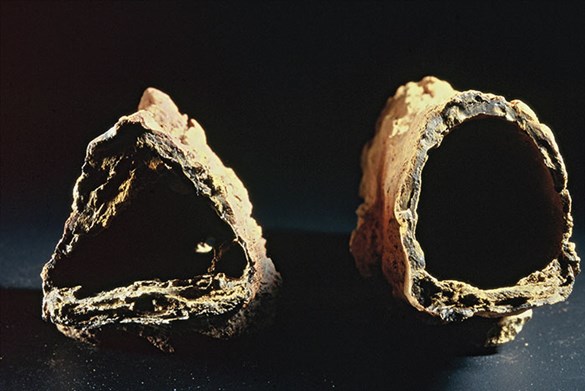
Above: These cross-sections of the two wheels show that they differed in many details, such as the shape of the wood and even the diameter. One wheel was a replacement.
At one end of the grave were remains of horse harnesses. No horses were buried with the chariot, but there were two bridle bits and four iron rings which fitted to the yoke to guide the reins.
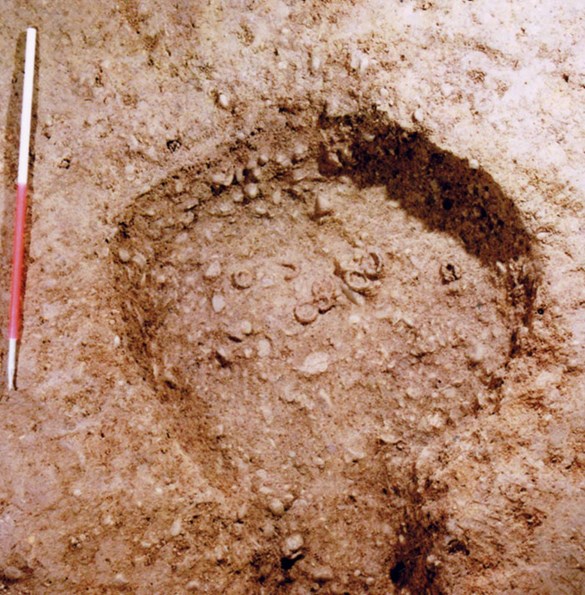
Above: The harness as excavated.
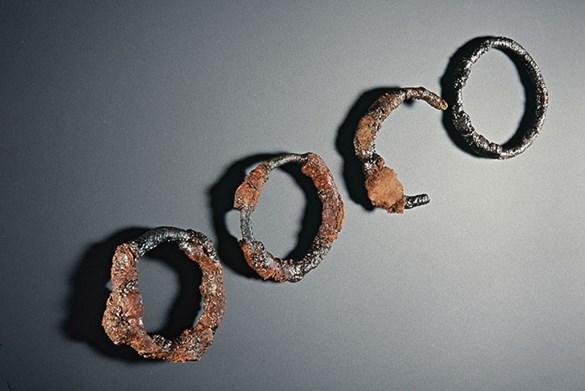
Above: The four rein rings or terrets. Corrosion preserved traces of the leather straps which fixed them to the yoke.

Above: The two bridle bits did not match, suggesting one was a replacement. Traces of harness straps were preserved by corrosion. The drawings show the original appearance of the bits.
Chariot burials are very rare in Europe as a whole, and are only found in certain areas. The closest parallels for the Newbridge burial come from northern France and Belgium.
However, it was the idea which travelled, not the chariot. Technical details of Newbridge, such as the way the wheel was made and the lack of suspension fittings, show this was not a continental chariot but a British-made vehicle.
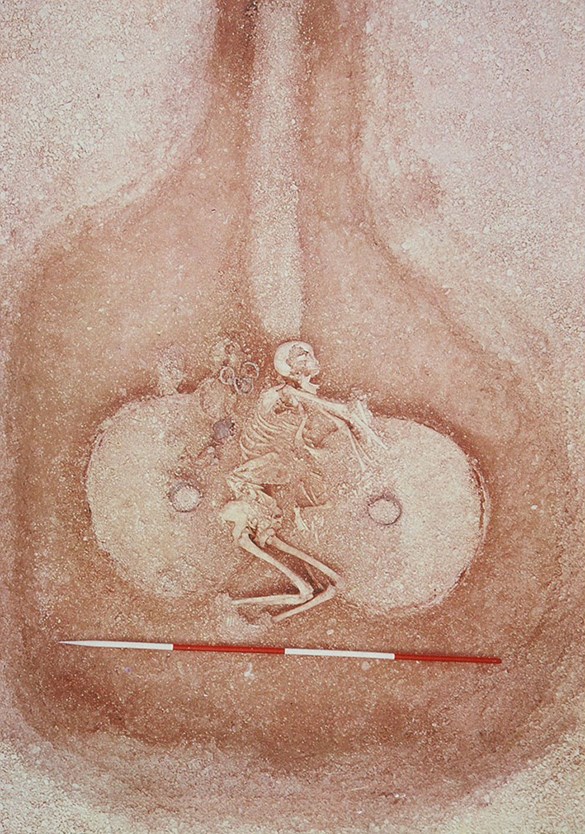
Above: The only other British chariot burials come from East Yorkshire. These are 200 years later than Newbridge and are very different – the chariots were dismantled.
In 2007, maker Robert Hurford built a reconstruction of the chariot, which is now in the National Museums Scotland collection. Here he explains how the archaeological evidence guided the process.